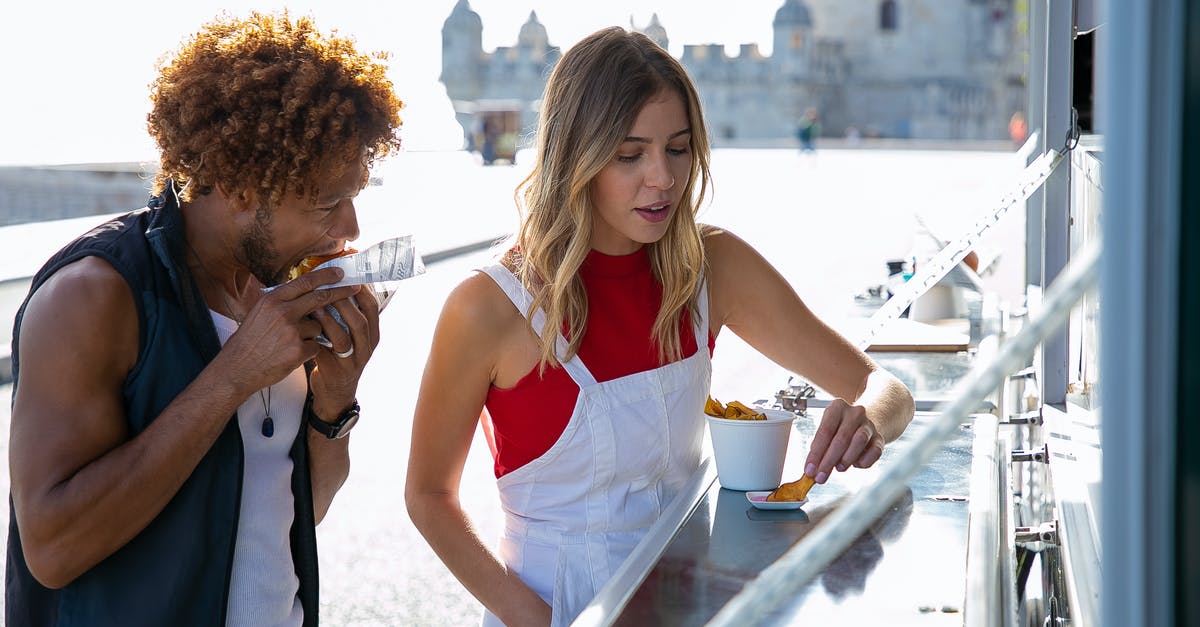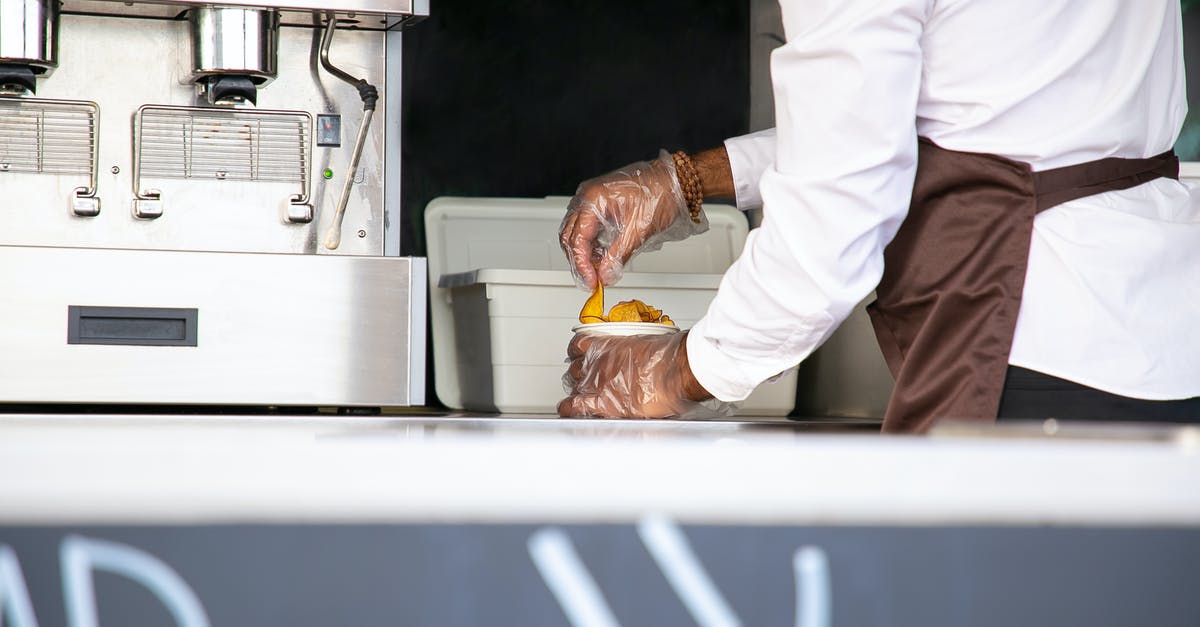Tough roast.. what's going wrong?

My housemate often manages to pick up reduced meat from the local supermarket (Sainsbury's in the UK) at the time he comes home.
It's usually silverside, topside or brisket of beef. Occasionally it's pork shoulder.
Without fail however my meat ends up "tough". Here's the exact procedure I follow for my standard "roast":
- Take frozen joint of meat out of the freezer around 8-10AM.
- Prepare 2 onions, celery, carrots and half bulb garlic. Throw them in my roasting pan.
- Season joint with salt and pepper, pour extra virgin olive oil over it, sear it in a frying pan.
- Cook at 20degC less than the suggested temperatures for the suggested times according to my MasterChef book, specifically for that cut of meat. For instance tonight's brisket was 900g - I cooked it at 160degC for 1h30m.
- Rest for 10-15m while I make the gravy and finish off the potatoes in another pan.
I cook it at 20deg less because it's a fan oven.
Can anyone explain the factors that affect how tough the meat becomes? Am I not searing properly? Is the meat prone to being tough because it's not fresh (reduced stuff)? Is it not defrosting for long enough?
Thanks in advance,
Best Answer
Meat is tough for two reasons:
1- An abundance of connective tissue.
2- When over cooked.
In your case I'd say you probably have both problems. Cheap meat is tough meat. It is from older animals or well worked muscle groups. This means that it has been fortified with a lot of extra connective tissue. It also means it has a lot of flavor.
The solution to #1 is slow, wet cooking that will melt that connective tissue into delicious gelatin. Braising is the normal way to do this. When meat is heated too far, even if the connective tissue has been carefully melted out, the meat proteins bunch up and stiffen- resulting in #2, a dry, unpleasant meal.
You are buying tough meat and cooking it relatively quickly with no thermometer. You don't have enough time or moisture to melt the collagen and you can't be sure you haven't over cooked the meat because you don't know the temperature. Using time doesn't work because chunks of meat are irregularly shaped so you can't know how long it will take for the heat to penetrate.
Buy yourself a probe thermometer to prevent #2. For #1 look for pot roast recipes. Some are easily done in slow cookers- others use a tent of sealed foil over the meat to seal in moisture. Plan on it taking much longer than your 1.5 hours. 3-6 hours are typical to produce a really succulent pot roast.
The searing is just for flavor and will not play a role in either melting collagen or cooking the interior of the meat.
Pictures about "Tough roast.. what's going wrong?"



Why did my roast turn out tough?
Undercooked pot roast will be tough and chewy. Test your roast with a fork before you remove it from the pot. If it is done, the fork will go in easily and you'll be able to twist off a forkful of meat. It if is still firm, return the roast to the pot and continue cooking for another hour.What do I do if my roast is tough?
An overdone roast is more problematic, because you can't "un-cook" it. Instead, your best bet is to mask its dryness as much as possible. Moistening the sliced beef with broth or some of its pan juices will help, especially if the pan juices still contain some of their fat.Can a tough roast be saved?
With a few extra steps, you can take a day-old, dry roast and make it moist and juicy again. One of the easiest ways, says Sidoti, is to use a slow cooker or pot with a lid. Place meat in the slow cooker or pot. Add 2 to 3 cups of liquid (your choice) with enough to cover about halfway but not fully.Can you fix tough roast beef?
Simmer in liquid. Just like for burnt meat, if your meat gets tough and dry then you can simmer it in a little bit of broth for a couple minutes. Don't allow it to overcook again but just allow the liquid to penetrate the meat.How to Fix a Real Tough Piece of Meat Sirloin Tip Roast
More answers regarding tough roast.. what's going wrong?
Answer 2
Just as a heads-up to anyone else reading this;
I cooked a 1.3Kg joint of brisket at 140 degrees Celsius (fan oven) for 3 hours.
It was absolutely beautiful. Tender; melt-in-your-mouth kind of stuff.
So, for anyone looking to cook brisket or silverside, give this a go. Lorraine Pascale has an excellent recipe for it in this book.
Answer 3
I may be completely missing something here but whenever I use brisket I use it as part of a slow roast or casserole. It's not a particularly tender cut but when cooked properly the results can be astounding, cheaper cuts can't be used like more expensive ones but when cooked properly they have a rich deep flavor that makes my mouth water.
I would cook it like you've done but just for a long time say 4 hours and then I'd turn the oven up to 200 C for half an hour to crisp it up. Here's a recipe by good old Hugh: http://www.channel4.com/4food/recipes/chefs/hugh-fearnley-whittingstall/slow-roast-beef-brisket-recipe.
If you don't have time for slow roasting buy a more expensive cut just less often or you could try some offal which is cheap as chips but delicious!
Hope this helps!
Answer 4
In addition to the other excellent answers, making sure it's completely defrosted on the inside is also quite important. I once made that mistake of not thawing the meat completely assuming it would be fine since it would be sitting for 6 hours in a slow cooker, but it came out tough and it ended up tasting like it was overcooked even though I know I've cooked that recipe for 8 hours before (more time didn't really help either, stayed about the same)
Answer 5
Brisket has a lot of connective tissue. A LOT. If a cut like brisket (or chuck, or pork shoulder) is tough, that's because it's undercooked. Time/temperature in a recipe is more a guideline. You're going to have to use tactile cues to determine whether or not your meat is done. You should be able to slide a fork through your brisket with little resistance. If you can't, then keep cooking it.
Answer 6
What does the trick for me has been to let the meat cool in the refrigerator then heat it back up a second time. The initial cooking phase converts the connective tissue into collagen, but it needs to dissolve into gelatin in order to prevent the roast from being tough. Letting the collagen cool first makes this second step easier and quicker
Answer 7
Slow cooking at low temperatures is a method to make meat that is gently-pull-apart-with-your-fork tender. Get a medium to large size crock pot/slow cooker. I find that the smaller size crock pots run at too high a temperature, but the larger ones have a good solid low temp. I throw a seven-bone roast into my crock pot and expect to wait 6 hours until it's tender. Good crock pot roast recipes abound, as well! Have fun!
Answer 8
Try cooking your meat, on gas mark 4, for 4- 5 hours you might find its lovely and tender. slow cooking meat is better
Answer 9
If you have tough meat and don't have all day to cook it, use a pressure cooker. After an hour or so, almost anything will submit!
Answer 10
Topside 1kg Bring meat to room temp Cover in goose fat Season well
Cook for 1 hour 5 mins First 20mins at 220c 45 mins at 180c Perfect roast every time
Sources: Stack Exchange - This article follows the attribution requirements of Stack Exchange and is licensed under CC BY-SA 3.0.
Images: Kampus Production, Kampus Production, Kampus Production, Kampus Production
